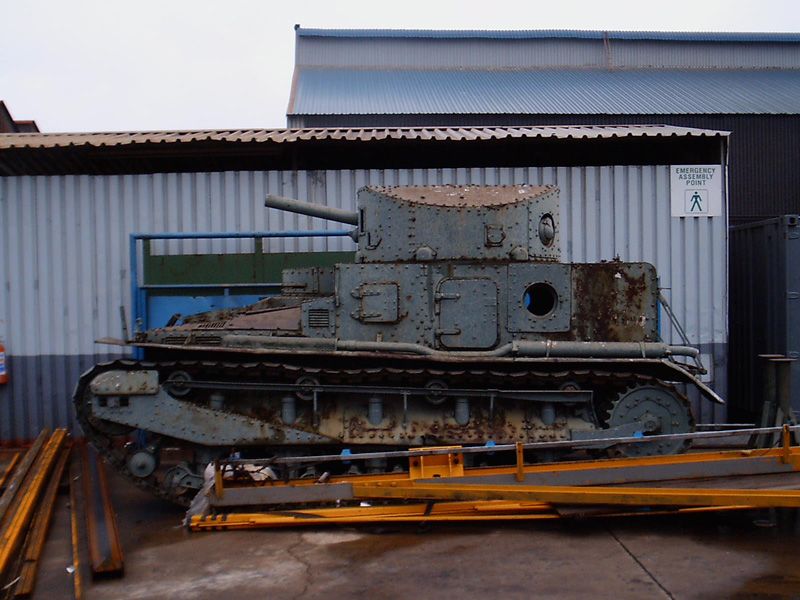Last week I started rambling on about a 3.7" howitzer, and gave some of the technical details, but what about its service life?
Well first there's a bit of an oddity to think about. I dashed it off in a amendment on the bottom of last weeks article. One of the first two Medium MKI tanks delivered to the army in 1923 was a CS tank armed with the MK I 3.7" howitzer. But only one of these guns was ever made, equally the final trials report came out in 1931 that raised some questions. To add to my confusion a 1925 organisation issued by the War Office required every tank battalion to have a battery of three close support tanks.
In hindsight its quite obvious, there just wasn't any money for it. Plus with no chance of a major war in Europe there wasn't seen to be a need for it. Of course that had a knock on effect, namely during exercises three Vickers Mediums of each battalion would have their guns and mounts painted white, and the huge letters CS applied to their turrets.
Then a flurry of work was done as we've seen towards the end of the 1920's. In September 1931 each tank battalion was issued one gun. The pace of issue carried on until the tanks were up to their full compliment. In 1933 a slight issue was noticed by the civil servants. The name of the gun was very similar to that of the 3.7" Mountain Howitzer used by the infantry. So an official proclamation was issued. Henceforth the gun would be known as the QF 3.7" Tank mortar.
The story of tanks in South Africa between the wars is a very short one. First you have His Majesties Landship Union, a Medium MK A Whippet that was used mainly as a propaganda tool, although during strikes in 1922 it was used to support the Government forces. Its début was a bit dismal and it got bogged down on a street. While dismounted its driver was killed by a sniper.
Then in 1933 the South African government approached the British to ask for a tank capable of mounting a 3.7" gun capable of firing tear gas (desperately trying to avoid a "CS gas" joke here) shells. As we've seen previously, the round was a failure. However two tanks were shipped to South Africa in August 1934. These tanks were Medium MK IA's, and at least one of them had had very hard life. It was one of the earliest Medium MKI's produced, then it had been used as a test bed for a new massively powerful engine. It had so much power the lowest gear had to be disabled. Equally most of the front hull was heavily modified. After the trials it was returned to its normal configuration and used as a instructional hull at Bovington before it and its sister were gifted to the South Africans. One of the two tanks still survives as a gate guardian at Bloemfontein.
 |
| Medium MK IA "T14". I believe its the only Vickers Medium CS tank in the world. This picture was taken before restoration. |
The combat records for a tank that can only fire smoke are difficult to find, and so the Tank Mortar passes into history. However to give you an idea of what the Tank Mortar would have been like in combat I did find the following short account. The unit in question was at the time equipped with Crusaders, and would have been using the 3" howitzer for the CS role, but the fight would have gone much the same anywhere the Tank Mortar was used.
In the retreat to El Alamein, the Commanding Officer of the squadron spotted some suspicious vehicles moving behind him. He drew his tanks up in a semi-circle pointing towards the possible enemy. While he called it in to his Regimental Command, the gunners probed the horizon for any clue as to what was below the dust cloud. This would have looked like the barrels were twitching, as if sniffing the air. Then permission was given to open fire.
 |
| Close up of the business end of a A9 CS tank. |


